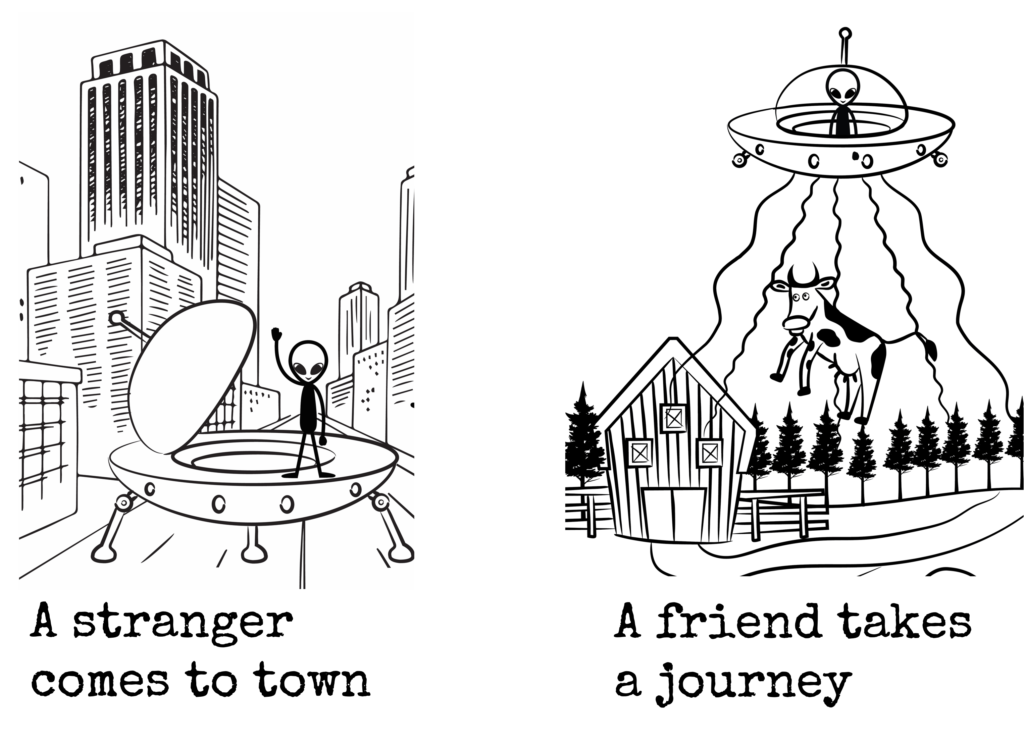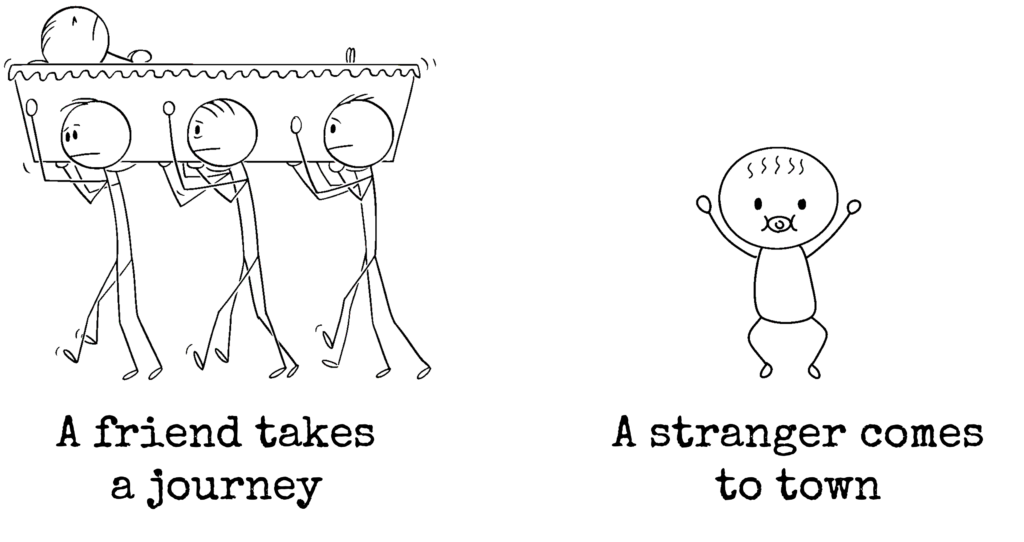Why We’re Here…
There are only two story plots…
A friend takes a journey.
A stranger comes to town.
I often heard this theory firsthand from John Gardner, one of the 20th century’s most renowned authors, literary scholars, and creative writing teachers.
In the 1970s, Gardner published bestsellers like October Light, The Sunlight Dialogs, Nickel Mountain, Grendel, and On Moral Fiction – as well as 1983’s posthumously released The Art of Fiction, which endures as a seminal handbook for aspiring writers. (There are a few authors named John Gardner; this is John Champlin Gardner – one of a kind.)
I studied under Gardner for a year at Binghamton University, before his life was cut short at age 49.
John C. Gardner: A Remembrance
John would roll into class 10 or 15 minutes late, singing a Welch song under his breath. He loved music and his Welch heritage.
He’d lie on his side atop the teacher’s desk, the sleeves of his thick highlander sweater pushed up his forearms, and spend the entire class time working the Dunhill tobacco in his pipe, still listening attentively as we students took turns reading our short stories. When not reading, we sat rapt, clinging to every word John uttered about art and life.
John would’ve questioned my mention of Dunhill in this story. He frowned on cultural references – especially brand names – which he viewed as a flaw of “gossipy” The New Yorker fiction popular at the time, arguing it disrupted the “vivid and continuous dream” that is the hallmark of great fiction.
John Gardner, teacher…and advocate of the vivid and continuous dream
The two plot theory has been attributed to many authors, like Tolstoy, Dostoevsky, and Hemingway, but evidence of its origins is traced only to Gardner (though, whether he was just being provocative or, um, literal remains to be seen).
Two-Plot: Making the Case
Susan Thornton, engaged to be married to John Gardner four days after what turned out to be his final journey, recounts – in her memoir, On Broken Glass: Loving and Losing John Gardner – of Gardner defending the theory at Vermont’s vaunted Bread Loaf Writers’ Conference:
“John, of course, always argued for the novel of ideas. Now talk turned to basic novel structure.
‘There are only two openings for a novel,’ John asserted. ‘A stranger comes to town, and a person goes on a trip. Some disruption of order. That’s all it is.’
Blue Argo spoke up. ‘Moby Dick.’
‘Ishmael goes on a trip,” he answered.
Blue squinted, tried again. ‘David Copperfield.’
‘A stranger comes to town. I am born.’
‘Virginia Woolf doesn’t follow that pattern,” someone objected.
‘That’s why she’s boring,’ he retorted. Then he was surprised by the hurt he had engendered. For him, it was just a game.”
In this retelling, Gardner positions his theory as defining openings of novels. Elsewhere, including my own recollection, it’s understood as a theory of story plot.
I’ve contemplated the theory for decades, and it hasn’t always rung true. But if it was nothing more than a game, why have writers debated it for 40 years after Gardner’s motorcycle tragically veered off the winding road near his rural Pennsylvania home in 1982?
As the world changed, and the craft of writing evolved from the days of Gardner’s typewriter to current tools of the trade, like laptops, mobile devices, and writing apps, I’ve found new meaning in Gardner’s theory.
In the modern era dominated by technology, where the identity of everyone and everything is distilled into a binary system comprised exclusively of zeros and ones, the prospect of only two plots seems not only plausible but probable.
A stranger comes to town: 1.
Someone goes on a journey: A hollow is left – 0.
Two-Plot, Tech, Co-Arising, and Yin Yang. (Oh yeah, and Hegel, too!)
The two plot theory aligns with the Buddhist principle of dependent co-arising (i.e. “This is, because that is”) and the Taoists’ yin-and-yang. This isn’t as far-fetched as it may at first seem. Gottfried Wilhelm Leibniz, the 17th century philosopher and mathematician who developed the binary system that underpins modern technology, was heavily influenced by the I-Ching’s descriptions of yin and yang.
Students of western philosophy will also detect overtones of Hegel’s dialectics:
Something moves, not because now it is here and there at another now, but because in one and the same now it is here and not here, because in this here, it is and is not at the same time.
German philosopher, G.W.F. Hegel
Who are we to argue with Hegel?
Of course, like the skeptical writer who tried to stump Gardner at a writers’ conference – we can’t help but rack our brains to identify a novel in which no one comes and no one goes, an equilibrium simply remains static. But that wouldn’t be a story, would it? That would be… well, Virginia Woolf.
John Gardner didn’t expound on two-plot theory in his books on writing. Just as he may have used the concept as a game primarily intended to stimulate the minds of aspiring writers, our new Two Plot enterprise explores illustrations of real and imagined milestones – amusing, poignant, or even a little scary – as a whimsical commentary on the eternal search to figure out, once and for all, whether we’re coming or going.
[We may earn commission from links on this page. But we only link to books we think you’ll love as much as we do.]



